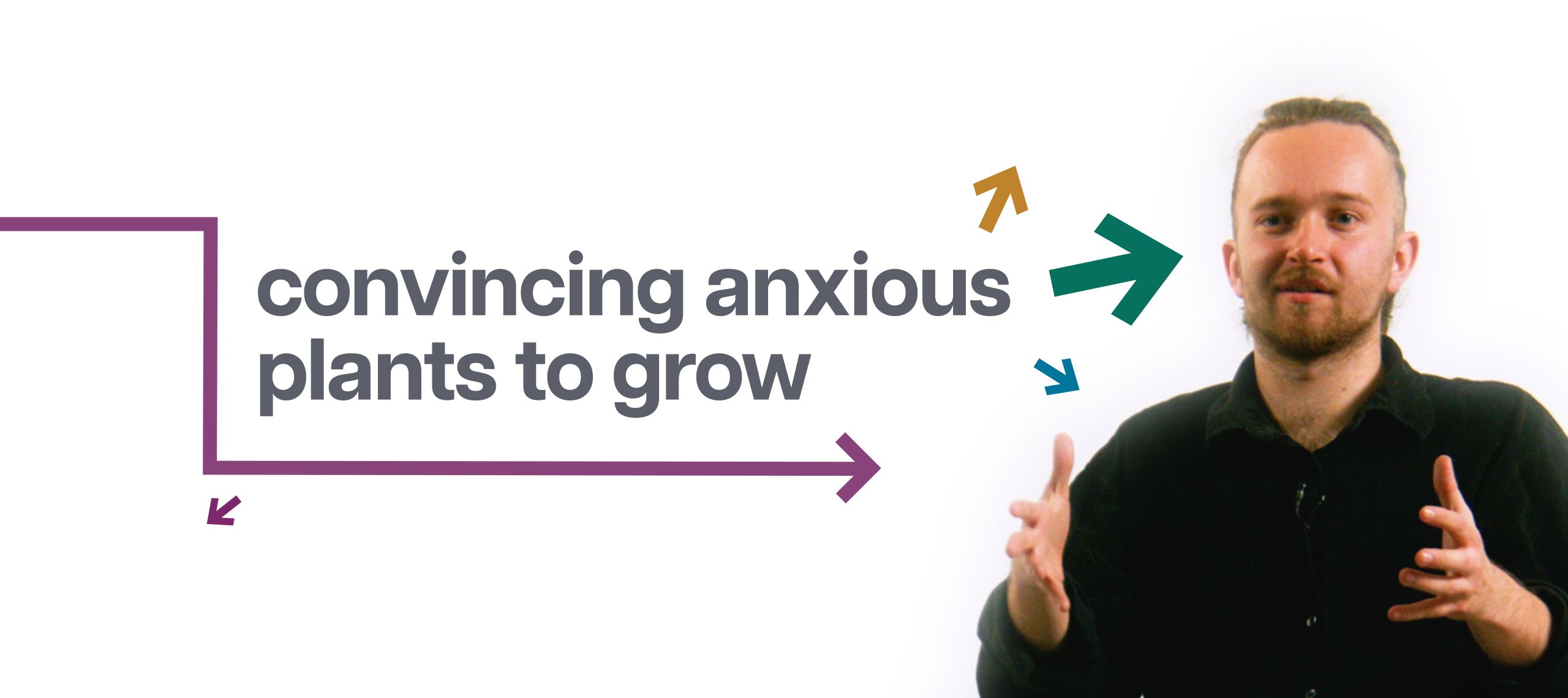
Research Journeys: Convincing anxious plants to grow
By understanding the core biology of this plant, by really going deep and understanding it, we could potentially save millions of lives and improve the lives of millions more people.
Alex has always been interested in plants, especially how they can have an impact on the lives of people around the world.
His research aims to improve our understanding of the way plants work. By increasing crop yields, he can help tackle the issues caused by climate crisis and the increased global population.
Alex is currently studying for a PhD in the Centre for Plant Sciences, funded by the National Environment Research Council.
Read more about Alex and his research.
Transcript
[Alex is sitting in front of a white background speaking directly to camera.]
Alex: My sort of research journey probably began when I was doing my A-levels in A-level biology. We did a case study, on something called Golden Rice, which basically this breed of rice, which has increased amount of a molecule called beta carotene in it, which is used to make vitamin A.
It doesn’t sound particularly important, but actually, one of the biggest world health concerns is vitamin A deficiency in a lot of the poorest parts of the world. And it can vary from anything from quite mild to being as severe as causing blindness or early death. So it's this really big issue.
I was just really inspired. I thought it was really interesting that just by understanding the core biology of this plant, by really going deep and understanding it. We could potentially save millions of lives and improve the lives of millions of more people.
I did my undergraduate degree in genetics, but always had an interest in plants because the thing that started me off on that was this learning about golden rice. And what I'd taken from that was an interest in genetics over an interest in plants. But still thought it was really cool that it had been done in plants.
Later on in my undergraduate degree, when I had options to do lab placements and practical work, I would often do work in plant based labs, and so I could develop even more of an understanding. And then eventually I ended up applying for PhDs. And I took this PhD at the University of Leeds. And what I really liked about this in particular was it was really focused on core biology.
So my PhD is in something called reproductive architecture in plants, which is how the underlying molecular genetic biology of the plants results in physical structures.
A lot of these structures like flowers and branches are core subunits that you find all across different plants, even if they're very distantly related.
They have very similar function and therefore very similar biology. So for example, this here is an ear of wheat. Wheat is a grass and one of the world's most important crops, like barley rice. This here is an ear of a grass that hasn't been bred by humans, but you can sort of see the core similarities.
And it's a bit like in mammals. If you look at a human's nose and compare it to a dog's nose and you compare it to an elephant's trunk, they're all completely different. But there's the same core structure underneath. They have the same job, but they might be different shapes, different sizes, and fulfil that role in slightly different ways. Plants do exactly the same thing.
Plants are alive. They aren't just a part of the environment. They are the environment. They are interacting. They're able to perceive the environment they're with, respond with the environment.They're able to change the environment. And they do all this without a brain, without a nervous system.
It's a way of life that's so vastly different to the way humans and animals in general have evolved that it's often easy to sort of forget that they are living creatures.
The relationship between humans and plants, humans breeding plants for our own benefit, has been going on for about 10,000 years. Whereas plants existed for millions of years before that and spent much of that time evolving without our input and without breeding them into a certain direction.
So plants have evolved in this harsh environment where resources can be sparse, and if they're not, it's not guaranteed that they'll be around forever. They can't get up and find more, and they've not got humans taking care of them.
So they've evolved to be quite anxious that any point, if everything's going well around them, at any point that could go away. They don't grow as much as they theoretically could with the resources available.
The plant is able to make a decision. The plant is able to do something which very much looks like it's choosing. It's deciding I have this much resource and so I'm going to grow in this way and I'm going to grow this amount. The issue with that is that it's counterintuitive to what humans want, which is for them to grow as much as possible. And the plants don't know that we're taking care of them and if they run out of water, will water them. If they run out of phosphorus, we'll give them more fertilizer.
So if we understood the mechanisms of how plants are choosing to do this, we could potentially grow plants with greater yields without having to increase fertilizer or without having to increase arable land, which is something that's reducing due to climate change.
A significant amount of my time is spent doing experiments which I think of as quite sort of old school biology. It's growing plants, doing the scientific version of poking them and seeing how they respond. And using that to improve our understanding of how plants develop.